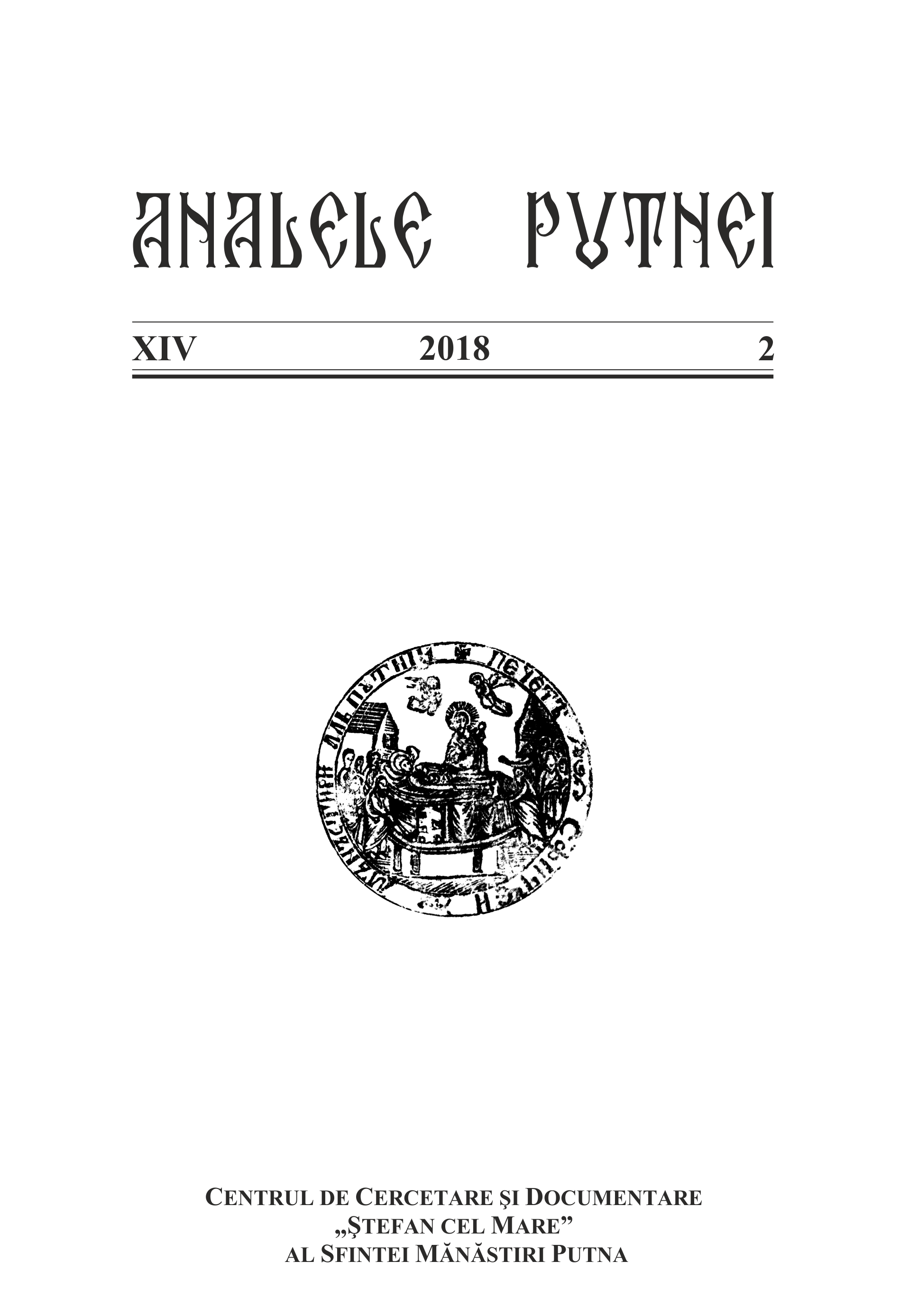Soborul Mănăstirii Putna la sfârșitul secolului al XVIII-lea, după documente păstrate la Allgemeines Verwaltungsarchiv din Viena
The Brotherhood of Putna Monastery at the End of the 18th Century According to Documents Held at the Allgemeines Verwaltungsarchiv in Vienna
Author(s): Arcadie M. BodaleSubject(s): History, Local History / Microhistory, 18th Century
Published by: Centrul de cercetare şi documentare ŞTEFAN CEL MARE
Keywords: monks; Putna Monastery; archives; Karl von Enzenberg; Bukovina;
Summary/Abstract: The Alter Kultus Fund from the Allgemeines Verwaltungsarchiv (“Austrian State Archives”) in Vienna keeps many documents on the history of the Orthodox Church in Bukovina under the Austrian rule. Within these historical sources, the earliest known data about Putna Monastery’s brotherhood, from 1785 and 1790, drew the author’s attention. The first such record was approved by the governor of Bukovina, Karl von Enzenberg, and included 21 monks under the guidance of Ignatius Eserskij. Many of the monks had been brought from the Bukovinian monasteries and sketes closed by the Austrians. Although most of the 25 monks who lived at Putna in 1776 could not be found on this official list, they managed to stay at the monastery with the help of their Putna brothers and that of Bishop Dositheus Herescu. The second list from Putna Monastery is richer in information because it provides information about the age of the monks, the place of their tonsure, the date of their ordination, and other assignments they received. In addition, it attests to the fact that out of the 21 monks recorded at Putna in 1785, by the end of October 1790 only 11 of them were tonsured at Putna, the rest having been brought from other monasteries. Of the ten monks who were missing from the list drawn up in 1790 at Putna, three were moved to other monasteries in Bukovina, some fell asleep in the Lord, but most of them went to Moldavia due to the secularization of monastic estates and the drastic limitation of food and clothing supplies for monks by the Vienna Court. As such, these lists illustrate the tough situation that befell the Bukovinian monasticism at the end of the 18th century and the Habsburg authorities’ policy of encouraging the monks’ exodus from Cordun to Moldavia.
Journal: Analele Putnei
- Issue Year: 2018
- Issue No: 2
- Page Range: 7-26
- Page Count: 20
- Language: Romanian
- Content File-PDF

